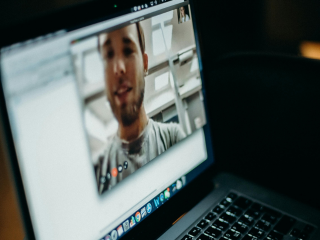- Home
- Social networking
- Social networking News
- Social Media Posts Can Help Improve Public Safety: Study
Social Media Posts Can Help Improve Public Safety: Study

Michiko Wolcott and colleagues evaluated social media traffic posted during and the days following typhoon Haiyan striking the Philippines in November 2013 to develop a set of social media analytics for emergency response managers.
"Social media can play a critical role in the dissemination of the information, as well as collection of relevant data during natural disasters," said Wolcott.
"The idea of leveraging social media data such as Twitter is intuitively attractive, given their natural ties to mobile devices with obvious disaster response implications," he explained.
Similarly, bio-statistician Elaine Nsoesie came up with a method for tracking food borne illness and disease outbreaks using social media sites such as Twitter and Yelp to supplement traditional surveillance systems.
Traditional surveillance systems capture only a fraction of the estimated 48 million food borne illness cases in the country each year, primarily because few affected individuals seek medical care or report their condition to the appropriate authorities, Nsoesie said.
"Reports of food borne illness on review sites could serve as early indicators of food borne disease outbreaks. Information gleaned from such novel data streams could aid traditional surveillance systems in near real-time monitoring of food borne related illnesses," Nsoesie added.
The findings were presented recently at the 2015 Joint Statistical Meetings (JSM 2015) in Seattle, US.
Get your daily dose of tech news, reviews, and insights, in under 80 characters on Gadgets 360 Turbo. Connect with fellow tech lovers on our Forum. Follow us on X, Facebook, WhatsApp, Threads and Google News for instant updates. Catch all the action on our YouTube channel.
Related Stories
- Samsung Galaxy Unpacked 2025
- ChatGPT
- Redmi Note 14 Pro+
- iPhone 16
- Apple Vision Pro
- Oneplus 12
- OnePlus Nord CE 3 Lite 5G
- iPhone 13
- Xiaomi 14 Pro
- Oppo Find N3
- Tecno Spark Go (2023)
- Realme V30
- Best Phones Under 25000
- Samsung Galaxy S24 Series
- Cryptocurrency
- iQoo 12
- Samsung Galaxy S24 Ultra
- Giottus
- Samsung Galaxy Z Flip 5
- Apple 'Scary Fast'
- Housefull 5
- GoPro Hero 12 Black Review
- Invincible Season 2
- JioGlass
- HD Ready TV
- Laptop Under 50000
- Smartwatch Under 10000
- Latest Mobile Phones
- Compare Phones
- Realme P4x 5G
- OnePlus Ace 6T
- OPPO A6x 5G
- Samsung Galaxy Z TriFold
- Poco F8 Ultra
- Poco F8 Pro
- Huawei Mate 80 RS Master Edition
- Huawei Mate 80 Pro Max
- Asus ProArt P16
- MacBook Pro 14-inch (M5, 2025)
- Poco Pad M1
- Poco Pad X1
- Just Corseca Skywatch Pro
- Honor Watch X5
- Acerpure Nitro Z Series 100-inch QLED TV
- Samsung 43 Inch LED Ultra HD (4K) Smart TV (UA43UE81AFULXL)
- Asus ROG Ally
- Nintendo Switch Lite
- Haier 1.6 Ton 5 Star Inverter Split AC (HSU19G-MZAID5BN-INV)
- Haier 1.6 Ton 5 Star Inverter Split AC (HSU19G-MZAIM5BN-INV)

















